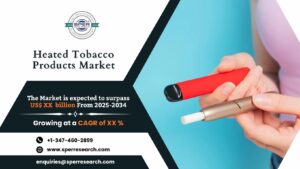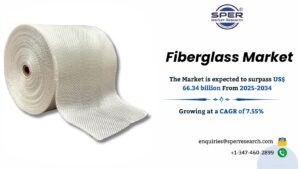Waterborne Silicone Market Scope and Future Investment 2034
Waterborne silicone is a silicone material dispersed in water, serving as an eco-friendly alternative to traditional solvent-based silicones. It delivers excellent durability, flexibility, and resistance to heat, weather, and chemicals, making it ideal for applications in coatings, sealants, adhesives, textiles, and personal care products. Unlike solvent-based silicones, waterborne versions have low or zero volatile organic compounds (VOCs), minimizing environmental impact. They are widely used across industries such as construction, automotive, electronics, and healthcare due to their high performance, safety, and compliance with strict environmental regulations.
According to SPER market research, ‘Global Waterborne Silicone Market Size- By Type, By Application, By End Use – Regional Outlook, Competitive Strategies and Segment Forecast to 2034’ state that the Global Waterborne Silicone Market is predicted to reach 3283.91 Million by 2034 with a CAGR 7.52%.
Drivers:
The emphasis on sustainable building practices is driving the adoption of waterborne silicones in construction sealants and coatings, valued for their durability, weather resistance, and eco-friendly nature. Rising demand for advanced protective coatings across construction, marine, automotive, and electronics industries—providing resistance to moisture, UV, and extreme temperatures—is boosting market growth. Infrastructure expansion in emerging economies further supports their use. In healthcare, waterborne silicones are increasingly applied in medical adhesives, wound care products, drug delivery systems, and wearable devices due to their biocompatibility, moisture resistance, and hypoallergenic qualities. Technological innovations and regulatory support are accelerating their widespread adoption.
Download the Detailed Analysis in PDF format, Here
Restraints:
The waterborne silicone market encounters several challenges despite its expansion. High production costs and complex manufacturing processes can restrict large-scale adoption. Compared to solvent-based silicones, slower curing times may impact industrial efficiency. Ensuring formulation stability and compatibility with various substrates remains a technical challenge. Stringent regulatory standards, especially in medical and industrial applications, add to compliance expenses. Furthermore, limited awareness among end-users and the requirement for specialized application methods can slow market growth. Overcoming these obstacles is essential for wider adoption and sustained development of the waterborne silicone market.
The North American waterborne silicone market is expanding, driven by sustainable coatings in aerospace, automotive, and energy sectors. Strict VOC regulations are prompting a shift from solvent-based to waterborne formulations. In the U.S., growth is also fueled by medical and healthcare applications, with silicone coatings, adhesives, and hydrogels used in wound care, drug delivery, and surgical instruments. Some significant market players are BRB International BV, Dow Chemical Company, Elkem Silicones, Evonik Industries AG, Momentive Performance Materials, Shin-Etsu Chemical Co., Ltd.
For More Information, refer to below link: –
Waterborne Silicone Market Growth
Related Reports:
Asia-Pacific Wood Charcoal Market Size
Follow Us –
LinkedIn | Instagram | Facebook | Twitter
Contact Us:
Sara Lopes, Business Consultant — USA
SPER Market Research
enquiries@sperresearch.com
+1–347–460–2899





